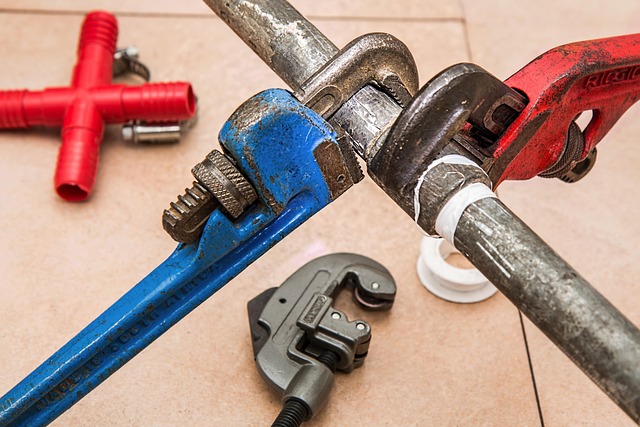Concrete crack sealing is essential for preserving the structural integrity of stem walls and buildings, preventing further damage from water infiltration and extreme weather conditions. Prompt action involves cleaning cracks, applying suitable sealants like epoxy or polyurethane, and reinforcing stem walls to stop corrosion and extend concrete lifespans. Regular maintenance, including periodic inspections and reapplication every few months, ensures long-term stability and durability for concrete structures, especially in harsh climates.
Concrete crack sealing is a vital process ensuring structural integrity and longevity of concrete surfaces. This comprehensive guide delves into the intricacies, from understanding crack sealing’s basics to choosing the right materials and step-by-step application. We explore stem wall repair’s role in preventing further damage, identifying common crack causes, and highlighting benefits of prompt action. Additionally, maintenance tips ensure long-lasting results, making this a indispensable resource for professionals and homeowners alike.
Understanding Concrete Crack Sealing: An Overview

Concrete crack sealing is a crucial process in maintaining and preserving structural integrity, especially for stem wall repair. It involves filling and sealing cracks in concrete surfaces to prevent further damage and water infiltration. This method is essential for addressing issues like hairline fractures, which can weaken structures over time. By sealing these cracks, the lifespan of concrete surfaces is extended, ensuring they remain sturdy and stable.
The process typically includes cleaning the crack to remove debris and contaminants, followed by applying a suitable sealant. These sealants create a protective barrier, filling gaps and blocking out moisture that could lead to further cracking. Regular crack sealing is particularly vital in regions with extreme weather conditions, as it helps withstand freezing temperatures and expanding concrete. This simple yet effective maintenance practice ensures the overall health of concrete structures, including stem walls, for years to come.
The Role of Stem Wall Repair in Structural Integrity

Stem Wall Repair plays a critical role in maintaining the structural integrity of any building, especially those constructed with concrete. These walls, which often form the foundation and support structure, are particularly vulnerable to cracks and damage over time due to various environmental factors like extreme temperatures, water intrusion, and heavy loads. When cracks appear, they can compromise the strength and stability of the entire structure if left unaddressed.
Prompt action is required to fix these issues, as stem wall repair involves identifying and sealing cracks before they expand further. This process not only enhances the aesthetic appeal but also prevents the infiltration of moisture, which could lead to corrosion and weakened concrete. A robust stem wall repair system ensures that the building remains secure, safe, and structurally sound for many years to come.
Identifying Common Causes of Concrete Cracks

Concrete cracks can be unsightly and weak spots in a structure’s foundation, leading to further damage if left unaddressed. Identifying the root cause is key to effective crack sealing. Common culprits include settlement issues due to uneven soil compaction or changes in temperature and moisture levels, which can cause concrete to expand and contract. Another factor is structural defects, such as poor initial construction or design flaws, which may manifest as cracks over time.
Stem wall repair is a solution for cracks resulting from these initial conditions. This involves reinforcing the existing walls with additional support, preventing further damage and providing long-lasting stability. Understanding the cause allows for tailored repairs, ensuring that not only do the cracks stop, but they don’t reappear, enhancing the overall durability of the concrete structure.
Benefits of Prompt Crack Sealing

Prompt crack sealing offers numerous benefits, especially in preserving concrete structures. When cracks appear, sealing them immediately is crucial for several reasons. First and foremost, it prevents further damage by blocking the path of moisture and other elements that could exacerbate the issue. Moisture intrusion can lead to steel reinforcement corrosion, causing the crack to widen over time. By sealing early, you halt this process, ensuring the concrete’s longevity.
Additionally, timely intervention through crack sealing is cost-effective. Small cracks are easier and less expensive to repair than larger ones. Prompt action not only saves money but also increases the structural integrity of stem wall repairs, which are integral to building stability. This proactive approach ensures that minor issues don’t turn into major problems, maintaining the overall quality and safety of concrete structures.
Choosing the Right Sealing Materials

When it comes to concrete crack sealing, selecting the appropriate materials is paramount for long-lasting repairs. The right sealants should be chosen based on several factors, including weather conditions, traffic volume, and the severity of cracks. For instance, in regions with frequent frost or extreme temperatures, a flexible sealant might be more suitable as it can expand and contract without cracking itself. On the other hand, for smaller cracks in less trafficked areas, a bitumen-based sealant could be an economic choice.
Additionally, considering the specific needs of a stem wall repair is crucial. Stem walls, being structural elements, demand sealants that offer both durability and strength. Manufacturers typically provide guidelines on application methods and suitable surfaces, so it’s essential to follow these recommendations to ensure the effectiveness of the sealing process.
Step-by-Step Guide to Effectively Seal Concrete Cracks

Sealing concrete cracks, especially those near stem walls, is a crucial step in maintaining your structure’s integrity and longevity. Here’s a straightforward, step-by-step guide to effectively seal those pesky gaps.
1. Preparation: Begin by thoroughly cleaning the crack area, removing any debris, loose concrete, or vegetation using a wire brush or pressure washer. Ensure the surface is dry before proceeding to prevent moisture intrusion during sealing.
2. Inspect and Repair Stem Wall: Examine the stem wall for any signs of damage or instability. If necessary, perform stem wall repair by reinforcing weak areas with additional concrete or re-setting uneven sections. A sturdy stem wall is essential for preventing future crack propagation.
3. Choose the Right Sealer: Select a high-quality epoxy or polyurethane-based crack sealer designed specifically for concrete. These products offer superior strength and flexibility, ensuring a long-lasting seal.
4. Apply Sealer: Pour the chosen sealer into a caulking gun and insert the tip into the crack. Slowly inject the sealer into the gap, ensuring it fills the entire length and width of the crack. For wider cracks, consider using a putty knife to spread the sealer evenly.
5. Vacuum and Clean: Once the sealer has cured (follow manufacturer instructions for drying time), use a vacuum cleaner with a small nozzle to remove any excess material from the crack’s surface. A thorough clean-up ensures the seal remains unobstructed, allowing proper adhesion and long-term effectiveness.
Maintenance Tips for Long-Lasting Crack Sealing

Regular maintenance is key to ensuring long-lasting crack sealing, especially in harsh climates. After the initial sealing process, it’s crucial to inspect the sealed cracks periodically, ideally every few months. Look for any signs of new cracks forming or existing ones widening, as these could indicate underlying issues that need to be addressed.
For stem wall repair and overall longevity, consider a bi-annual maintenance routine. This includes reapplying sealant as needed, especially in areas with high traffic or exposure to moisture. Using the right products specifically designed for concrete crack sealing is essential. Additionally, keeping the surrounding area clear of debris and avoiding heavy loads on the sealed cracks can contribute significantly to their durability.
